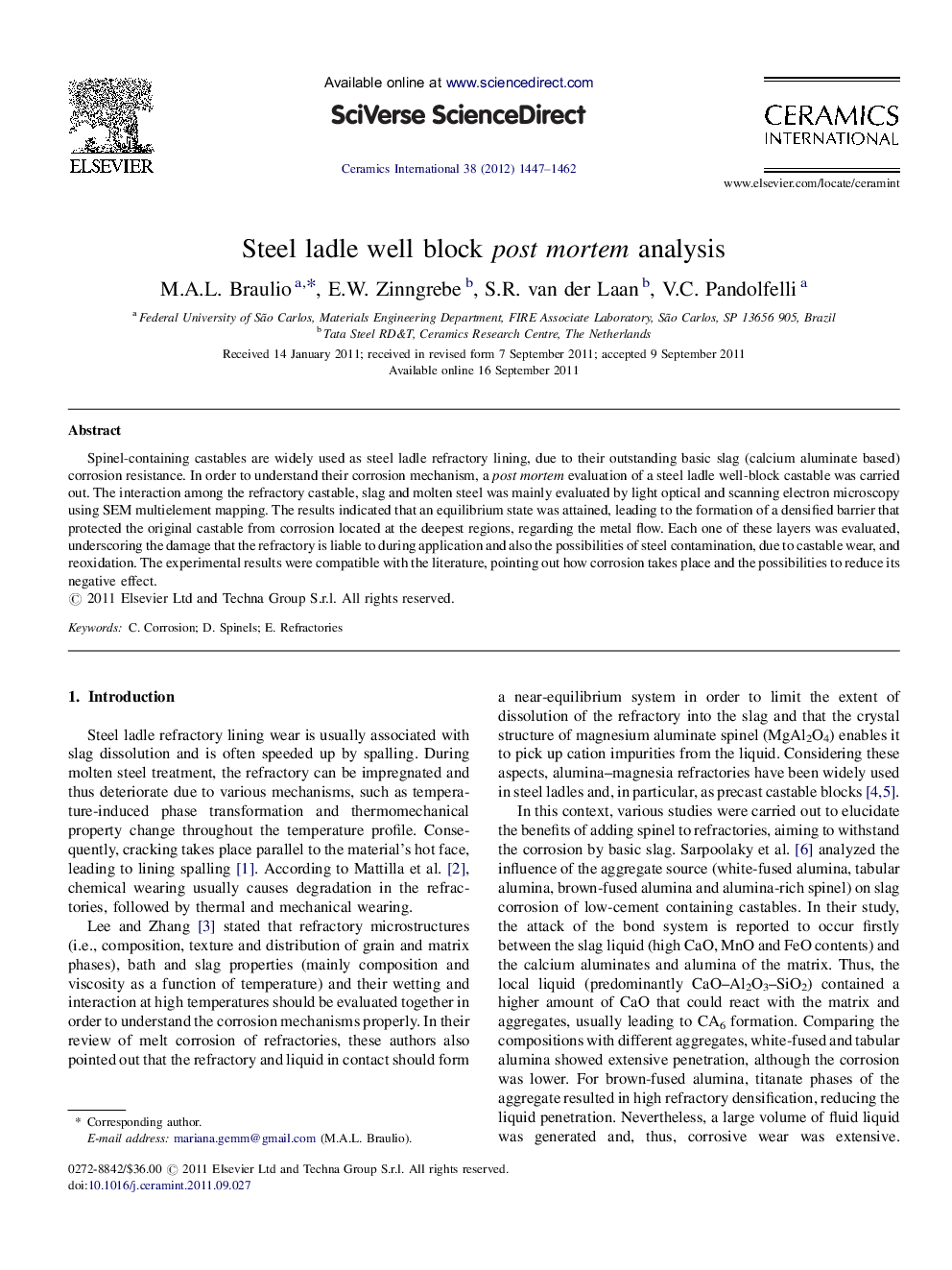| Article ID | Journal | Published Year | Pages | File Type |
|---|---|---|---|---|
| 1462545 | Ceramics International | 2012 | 16 Pages |
Spinel-containing castables are widely used as steel ladle refractory lining, due to their outstanding basic slag (calcium aluminate based) corrosion resistance. In order to understand their corrosion mechanism, a post mortem evaluation of a steel ladle well-block castable was carried out. The interaction among the refractory castable, slag and molten steel was mainly evaluated by light optical and scanning electron microscopy using SEM multielement mapping. The results indicated that an equilibrium state was attained, leading to the formation of a densified barrier that protected the original castable from corrosion located at the deepest regions, regarding the metal flow. Each one of these layers was evaluated, underscoring the damage that the refractory is liable to during application and also the possibilities of steel contamination, due to castable wear, and reoxidation. The experimental results were compatible with the literature, pointing out how corrosion takes place and the possibilities to reduce its negative effect.
